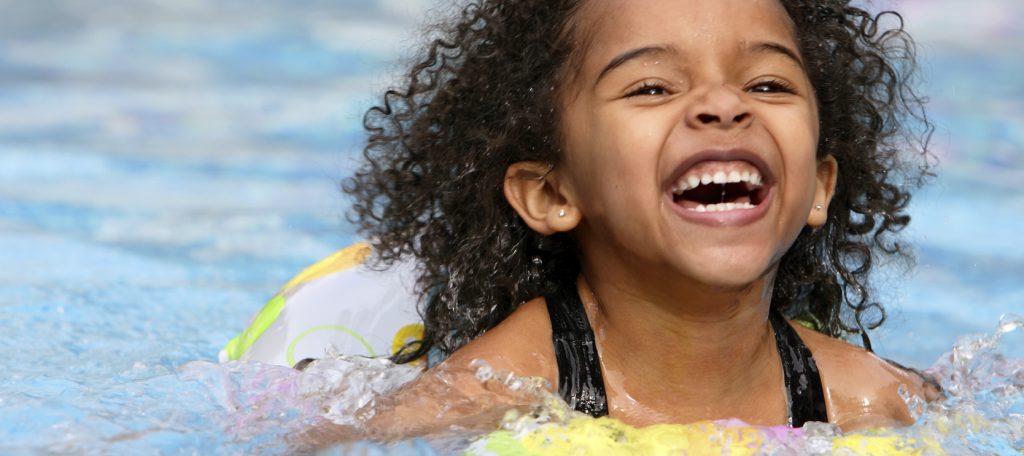According to the Centers for Disease Control and Prevention, “swimmer’s ear,” also known by its clinical name otitis externa, causes an estimated 2.4 million visits to a healthcare provider each year.
Though swimmer’s ear affects all age groups, it’s seen most often in children. Caused by water remaining in the ear canal too long post-swim, which creates the ideal environment for infection, swimmer’s ear is both persistent and painful.
Symptoms are uncomfortable at best and include pain or itching in the outside part of the ear, fluid drainage, a stuffed-up, congested feeling in the ear, and a decrease in hearing ability in that ear. If your child displays any of these symptoms, it’s important to treat the condition. If your child has had a perforated eardrum, see your pediatrician—you can’t use at-home drops in that case. When left untreated, swimmer’s ear can cause swelling, further decrease in hearing ability and fluid buildup that resembles pus.
Your child could be more likely to develop swimmer’s ear if:
- He has psoriasis or another skin condition that increases likelihood of infection in the ear canal
- Your child swims frequently—this is particularly true for children who are on swim teams or take regular lessons
- You clean your child’s ears often, removing the protective layer of earwax
Fortunately, there are many ways to prevent swimmer’s ear. One of the best methods? Keep the protective layer of earwax. It can be tempting to clean out your child’s ears regularly, but most available at-home methods do more harm than good. If wax buildup is bothering your child either due to itching or muffled hearing, talk to your pediatrician about a solution.
When it comes to swimming, earplugs and bathing caps are both great options to keep water out of your child’s ears. After a swim, you can also use a hair dryer, set on the lowest heat setting and fan speed, to dry any remaining water in the ear canals.
After a bout with swimmer’s ear, ask the doctor about how long your child should stay out of the pool before returning to regular swimming.
Solving Swimmer’s Ear at Home
If your child is prone to swimmer’s ear, never fear—there are preventive steps you can take. In addition to sending them off to the pool with earplugs, you can make your own eardrops at home. These drops can be used both before as well as after swimming to evaporate any excess water.
Before using any ear drops—whether you make them at home or purchase them over the counter—be sure to check with your child’s pediatrician to make sure he’s never had a perforated eardrum.
To make the ear drops:
- Combine a solution of one part vinegar and one part rubbing alcohol in a small bottle.
- Prior to swimming, or after getting out of the pool, put five drops of the solution in each ear.
- After letting it sit for five minutes, drain the remaining solution back out of the ears.
If you or a loved one has symptoms of swimmer’s ear, don’t wait for treatment—find an urgent care location near you.
Sources:
cdc.gov, familydoctor.org, kidshealth.org, entnet.org, diversalertnetwork.org
